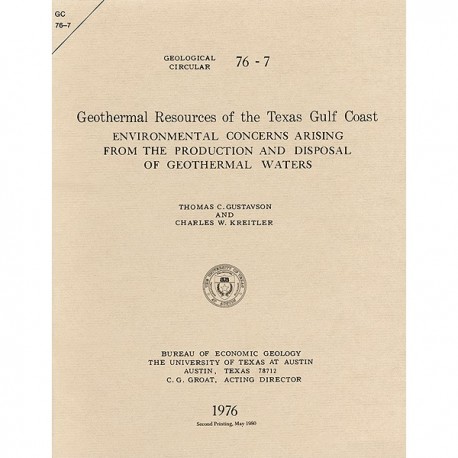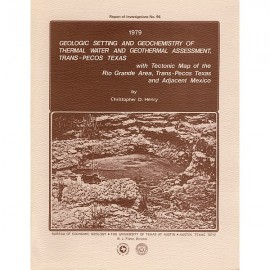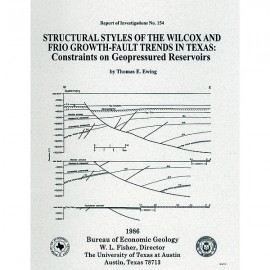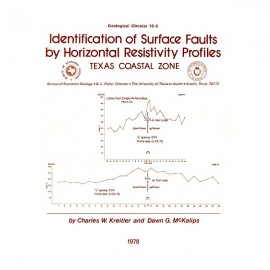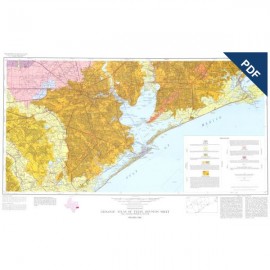Geological Circulars
-
Books & Reports
- Reports of Investigations
- Guidebooks
- Udden Series
- Geological Circulars
- Down To Earth
- Atlases of Major Oil and Gas Reservoirs
- Texas Memorial Museum Publications
- Environmental Geologic Atlas of the Texas Coastal Zone
- Mineral Resource Circulars
- Other Reports
- Seminars and Workshops
- Handbooks
- Submerged Lands of Texas
- Symposia
- Annual Reports
- Open File Reports
-
Maps & Cross Sections
- Thematic Maps
- Miscellaneous Maps, Charts & Sections
- Geologic Atlas of Texas
- STATEMAP Project Maps
- Geologic Quadrangle Maps
- Cross Sections
- Highway Geology Map
- Energy and Mineral Resource Maps
- Shoreline Change and Other Posters
- Wilcox Group, East Texas, Geological / Hydrological Folios
- Bouguer Gravity Atlas of Texas
- River Basin Regional Studies
- Featured Maps
- Posters
- Teachers & the Public
-
Geological Society Publications
- Gulf Coast Association of Geological Societies
- Alabama Geological Society
- Austin Geological Society
- Corpus Christi Geological Society
- Houston Geological Society
- Lafayette Geological Society
- Mississippi Geological Society
- New Orleans Geological Society
- South Texas Geological Society
- GCS SEPM Publications
- Historic BEG & UT Series
Geothermal Resources of the Texas Gulf Coast: Environmental Concerns
GC7607
A free, digital version of this publication can be found on: Texas ScholarWorks
GC7607. Geothermal Resources of the Texas Gulf Coast: Environmental Concerns Arising from the Production and Disposal of Geothermal Waters, by T. C. Gustavson and C. W. Kreitler. 35 p., 23 figs., 7 tables, 1976. ISSN: 0082-3309. Print.
To purchase this publication as a PDF download, please order GC7607D.
ABSTRACT
Disposal and temporary surface storage of spent geothermal fluids and surface subsidence and faulting are the major environmental problems that could arise from geopressured geothermal water production. Geopressured geothermal fluids are moderately to highly saline (8,000 to 72,000 parts per million total dissolved solids) and may contain significant amounts of boron (19 to 42 parts per million). Disposal of hot saline geothermal water in subsurface saline aquifers will present the least hazard to the environment. It is not known, however, whether the disposal of as much as 54,000 m3 (310,000 barrels) of spent fluids per day into saline aquifers at the production site is technically or economically feasible. If saline aquifers adequate for fluid disposal cannot be found, geothermal fluids may have to be disposed of by open watercourses, canals, and pipelines to coastal bays on the Gulf of Mexico. Overland flow or temporary storage of geothermal fluids may cause negative environmental impacts.
As the result of production of large volumes of geothermal fluid, reservoir pressure declines may cause compaction of sediments within and adjacent to the reservoir. The amount of compaction depends on pressure decline, reservoir thickness, and reservoir compressibility. At present, these parameters can only be estimated. Reservoir compaction may be translated in part to surface subsidence. When differential compaction occurs across a subsurface fault, fault activation may occur and be manifested as differential subsidence across the surface trace of the fault or as an actual rupture of the land surface.The magnitude of environmental impact of subsidence and fault activation varies with current land use; the greatest impact would occur in urban areas, whereas relatively minor impacts would occur in rural, undeveloped agricultural areas.
Geothermal resource production facilities on the Gulf Coast of Texas could be subject to a series of natural hazards: (1) hurricane- or storm-induced flooding, (2) winds from tropical storms, (3) coastal erosion, or (4) expansive soils. None of these hazards is generated by geothermal resource production, but each has potential for damaging geothermal production and disposal facilities that could, in time, result in leakage of hot saline geothermal fluids.
Keywords: geothermal resources, Gulf Coast, natural hazards, Texas Gulf Coast, waste disposal, Texas
Citation
Gustavson, T. C., and Kreitler, C. W., 1976, Geothermal Resources of the Texas Gulf Coast: Environmental Concerns Arising from the Production and Disposal of Geothermal Waters: The University of Texas at Austin, Bureau of Economic Geology, Geological Circular 76-7, 35 p.
